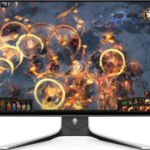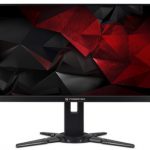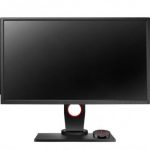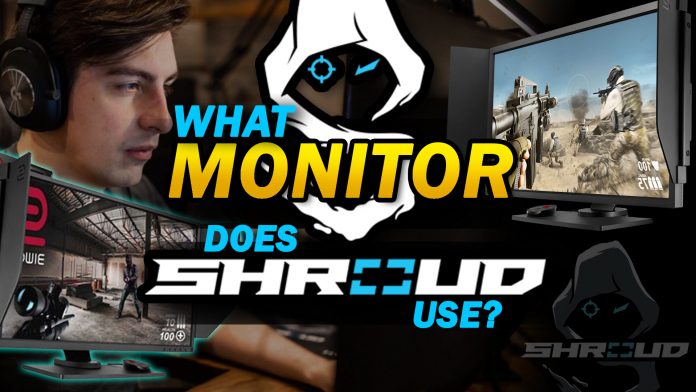
| Preview | Model | Refresh Rate | Response Time | Resolution | Price |
|---|---|---|---|---|---|
| Alienware AW2721D | 240 Hz | sub-1 ms | 2560 x 1440 | |
| Acer Predator XB252Q | 240 Hz | 1 ms | 1920×1080 | |
| BenQ ZOWIE XL2540 | 240 Hz | 1 ms | 1920×1080 |
From a professional eSports player to a full-time streamer, Shroud has gained millions of followers that admired his skill, so much so that people wonder what kind of peripherals he’s using to stay as competitive at all times.
Contents of this Page
Who is Shroud?

Michael Grzesiek, popularly known as Shroud (formerly mEclipse), was a professional Counter-Strike: Global Offensive player turned full-time streamer on Twitch, then Mixer. At the time of this writing, Shroud has over 7 million followers on Twitch and almost 1.2 million on Mixer.
Shroud started his career playing CS:GO with several ESEA teams, particularly, Exertus and Manajuma. He was later acquired by Cloud9 (formerly CompLexity Gaming) as a stand-in, before he officially signed with Cloud9 in August 2014.
Shroud played professionally and helped Cloud9 to place in various Leagues worldwide until he officially announced that he would step down from Cloud9 on August 16, 2017. About a year later, on April 18, 2018, Shroud stepped down as a member of Cloud9 and left professional CS:GO entirely.
Same shroud. New home.https://t.co/eZV2GBBSsY pic.twitter.com/AHaajkjees
— Michael Grzesiek (@shroud) October 24, 2019
After spending thousands of hours on Twitch, Shroud announced he would be streaming exclusively on Mixer on October 24, 2019. Mixer is a live streaming platform similar to Twitch owned by Microsoft. He does so well that he hit the 1-million follower milestone just four months since he transferred.
What Games Does Shroud Play Nowadays?
After playing professionally in CS:GO, Shroud transitioned to a full-time streamer and played PlayerUnknown’s Battlegrounds on Twitch. He even participated in tournaments from time to time.
According to TwitchTracker, PUBG, CS:GO, Apex Legends, Call of Duty: Black Ops 4, and Tom Clancy’s Rainbow Six: Siege, are the top 5 games Shroud has played the most. But just recently, he has started playing some Valorant.
Looking at his top 10 most played games on Twitch, 8 out of 10 are first-person shooter games. And this makes it safe to assume that whatever monitor shroud is using played an essential role in keeping him competitive.
With that in mind, does Shroud use only the best? Let’s look at Shroud’s gaming monitor.
What Gaming Monitor does Shroud Use?
Shroud uses a 27-inch Alienware AW2721D gaming monitor. It has features like a 240 Hz refresh rate and a sub-1ms response time, putting the best of the best competitive players and streamers at an edge.
Shroud’s Current Monitor (As of May 2022): Alienware AW2721D
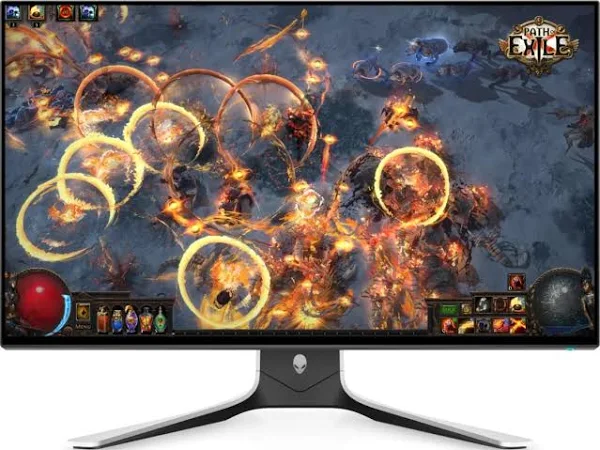
Tech specs:
Size: 27 inches | Refresh Rate: 240 Hz | Response Time: <1ms | Panel Type: IPS | Max Resolution: 2560 x 1440 pixels
Shroud’s previous monitor, the BenQ ZOWIE XL2540, is a powerful monitor that genuinely delivers the needs of any FPS gamer. But human as we are, we just can’t get enough of what we already have. Thus, the reason why Shroud’s monitor is now upgraded and uses the new Alienware AW2721D gaming monitor.
This is a 27-inch monitor with a max resolution of 2560 x 1440. Even though it has 2K resolution, it still doesn’t compromise the monitor’s performance. Compared to other 2K resolution monitors out there, the Alienware AW2721D has a very competitive response time that’s less than 1 ms, and that’s a luxury you can only find in premium-grade monitors.
If you are a competitive player, 2K monitors or even 1080p resolution monitors with a 1ms or less response time is really attractive, as it puts players in a very competitive edge.
Moreover, The Alienware AW2721D uses the NVIDIA G-SYNC technology that eliminates screen tearing to achieve a buttery-smooth gaming experience.
Premium-grade materials, rock-solid base, and top-grade features. That’s why Shroud loves this monitor so much. It’s also one of the best HDR gaming monitors today!
Shroud’s Previous Monitor that he Uses: BenQ ZOWIE XL2540
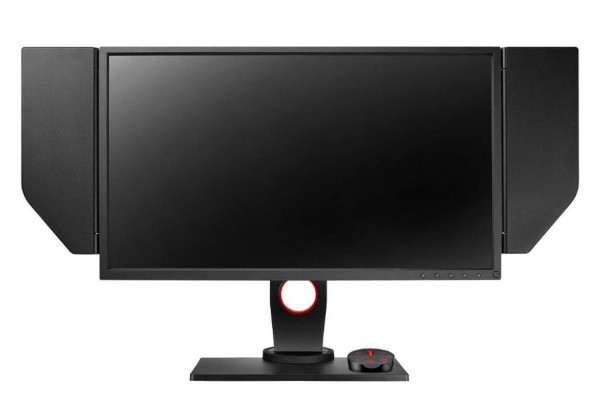
Tech specs:
Size: 24.5 inches | Refresh Rate: 240Hz | Response Time: 1ms | Panel Type: TN | Max Resolution: 1920×1080 pixels
With all the specifications and features this monitor has, I can see why Shroud loved this! This gaming monitor was among the top gaming monitors for competitive gaming and highly-anticipated pro gaming monitors– hands down.
These aren’t just for aesthetics. This functions in a way that will make your gaming experience more immersive than it already is. These paddles are called “Shield,” which helps you focus on your game by blocking or “shielding” light sources or glares from interfering with the screen.
But don’t worry, because you can take these panels off anytime. If you live in a man cave where natural sunlight won’t interfere on your screen– or if you’re planning to use this in a 3-monitor setup (like Shroud did), the panels should not be an issue.
The ZOWIE XL2540 can display up to 240 frames per second, making everything look silky smooth. But do note that you’ll need a powerful graphics card like the RTX 2080 Ti that Shroud uses to get that many frames.
This monitor also has a lightning-fast response time of 1ms that ensures everything you see moving is where they should be. Moreover, the monitors G-Sync monitor feature lets you enjoy the gaming without screen tearing.
But that’s not it as the BenQ ZOWIE XL2540 has other features that can make your gaming experience super comfortable. For example, the monitor has plenty of adjustment feature that allows you to swivel, tilt, pivot, and make some height adjustments.
You can also customize monitor modes and switch between settings with the S-switch feature. Moreover, the ZOWIE XL2540 lets you stay sharp and competitive no matter what game you’ll be playing.
Having customized monitor settings allows you to see your enemies faster. Since games are known to have different brightness settings and output, this surely will come in handy.
Overall, it performs outstandingly as a gaming monitor, a reason why this was Shroud’s preferred monitor before. Plus, you can assure your investment is spent well.
Another Shroud’s Previous Monitor that he Uses: Acer Predator XB252Q
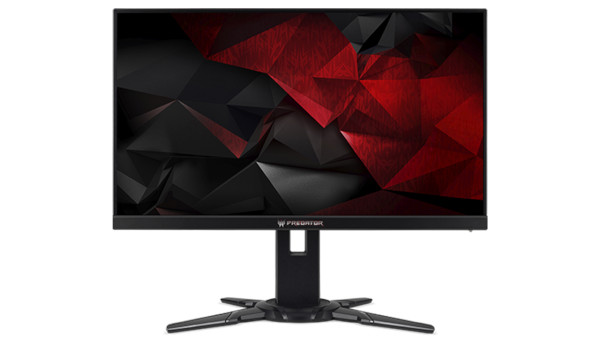
Tech specs:
Size: 24.5 inches | Refresh Rate: 240Hz | Response Time: 1ms | Panel Type: TN | Max Resolution: 1920×1080 pixels
Shroud always aims to stay competitive when playing. No wonder the Acer Predator XB252Q was one of Shroud’s previous monitor. This monitor has been mentioned many times as one of the best TN panels in many tech websites.
Acer is a reputable brand that doesn’t fail, and the Predator line is among the premium line of monitors.
With a 240Hz refresh rate, things will look silky smooth, putting you at a considerable advantage if you’re a dedicated FPS gamer like Shroud. But be reminded that this many frames will require a very powerful graphics card. If you’re planning on pairing this monitor with a lower-end graphics card or even a mid-range graphics card like a GTX 1060, you might want to reconsider and get a more powerful graphics card.
But to be fair, you can still rock a GTX 1060 on this one, but you’ll have to cut some of the graphical settings in the game to get a steady 240 frames. While you may experience VIP treatment with this monitor, it’s not as close as his current monitor (covered in detail below).
This monitor is a TN panel with a max resolution of 1920×1080. Playing on this monitor does help you as it lets you see enemies faster and better.
A monitor with a 1ms response rate ensures you get real-time changes on the screen. Paired with the G-Sync monitor gaming technology and games will look really smooth without screen tearing messing around when you’re in the heat of a battle.
As far as adjustments go, you can do more than just height adjustment. You can tilt, pivot, and swivel the monitor. Ergonomically, this ensures you always have a good view of the monitor comfortably from almost every angle.
Unlike the other monitors you’d find in the market, this has an OSD feature that makes it unique. There are four buttons and a joystick that runs horizontally along the back. You can calibrate the colors and adjust plenty of stuff. But Acer’s GameView is an excellent addition as it lets you customize profiles to your gaming preference.
If you’re looking for a 240Hz monitor that’s more affordable than what Shroud is using now, this will be one of the best out there.
The Most Expensive Monitor Isn’t Always the Best for A Gaming PC
Some of you may be wondering, “why didn’t Shroud get a 4K monitor instead when he could afford it? Does Shroud use lower resolution for a reason?”
That’s true. But you don’t need the best color reproduction or accurate color displays for your gaming PC if you want to stay competitive. Instead, it’s about seeing the enemies first before they see you, and the best way to achieve this is to pick a monitor that goes well with the games you’re playing.
It can be easy to get overwhelmed with the features you have to consider. And if you’re unsure which type of monitor is perfect for the games you play (or your gaming PC), refer to our detailed buying guide below.
Check Essential Factors that Matter When Buying a Monitor
Does Shroud even consider buying all the latest monitors?
Shroud can afford any monitor he wishes to use, but he specifically picked the abovementioned as this puts him at a considerable advantage. There’s nothing wrong if you buy what he buys as long as money isn’t an issue.
But if you’re on a budget and want to make sure your investment will give you what you or your gaming PC deserve, check price features and refer to the following and take note of what matters to you.
Size
The diagonal measurement of the screen is an essential factor you should consider when buying a monitor. Different monitor sizes in the market can go as small as 18-inch monitors to as big as 30-inch monitors.
While it’s true that a bigger screen size allows you to see more detail, it also comes at a higher price tag. However, streamers and even professional eSports gamers don’t need the biggest to stay competitive.
You see, there are consequences when playing competitively on a large monitor. Users may be able to see more details on the screen, but this also means their eyes will have to travel vast distances which put them at a disadvantage.
Ideally, you’d want to get a 24-inch monitor regardless if you’re a casual gamer or someone who just wants to stay competitive on the battlefield. But do note that this doesn’t restrict you from getting 27-inch wide monitors as it still boils down to personal preference.
As long as it fits comfortably on your desk, you should be fine.
Resolution
The resolution is the total pixel count of a monitor. It consists of two numbers (width x height), where the first number represents the horizontal pixel count while the second represents the vertical pixel count.
The higher the number, the more details can be displayed on your screen. But remember that this has to be paired with the actual monitor size to get the best output. While there’s nothing wrong with aiming for a monitor with a higher resolution count, it doesn’t always mean it’s right for you.
Take professional streamers and eSports players as an example. They can get monitors with 4K displays, but they decided to use a 1920×1080 resolution monitors as this doesn’t put as much effort on the graphics card. More FPS or frames per second in gaming will put you at an advantage, and going 4K reduces FPS significantly in exchange for better quality display.
If you want to invest in a monitor designed for gaming, a 1920x 1080 resolution monitor on a 24-inch display will be ideal. But at the end of the day, there’s nothing wrong with going 4K if you so wish to, especially if you do professional content creation on the sides.
Aspect ratio
Widescreen (16:9) or Ultrawide(21:9)? Aside from the features mentioned above, the aspect ratio is yet another feature that can make or break your investment. Although it won’t give you a competitive edge, it sure will make your games look picturesque.
Most games are designed by default to work on a 16:9 aspect ratio monitor, and 24-inch 1080p resolution monitors are usually compatible with this aspect ratio. Larger screens with wider screen real-estate have a 21:9 aspect ratio.
Unfortunately, there aren’t that many games that can support this display. To be safe, a 1080p 24-inch monitor with a 16:9 aspect ratio should give you everything you need to play competitively and casually.
Panel Type
There are three types of screen panel can choose from:
TN (Twisted Nematic) – are perfect for competitive and casual gamers. It has lower latency than IPS panels, supports higher refresh rates, and is cheaper overall.
IPS (In-Plane Switching) – these are great for gamers who also do content creation. It has outstanding color accuracy and has better viewing angles than any other panel.
VA (Vertical Alignment) – this panel type may have both features of TN and IPS panels. Still, we don’t necessarily recommend this for either gaming or content creation unless you’re looking for an affordable monitor with a slightly faster refresh rate and a slightly better color reproduction altogether.
FreeSync or G-Sync?
Does Shroud use this feature at all? Screen tearing is a notorious problem that will ruin any gaming experience caused when the graphics processor and the display are not in sync with each other. Screen tearing is the horizontal line that appears on your screen, separating the top and the bottom section of the screen.
With G-Sync and FreeSync feature, screen tearing won’t be a problem. These are eliminated without putting too much load on the graphics card. Both Nvidia and AMD provide these features.
Overall, they have very identical technologies, but they have key differences that make each feature unique. The general rule of thumb is to get a gaming monitors FreeSync features if you have an AMD graphics card, and a G-Sync compatible monitor if you own an Nvidia graphics card.
Refresh Rate
Of all the features you should look into, the refresh rate is probably the most important, especially if you’re the pro or competitive type like Shroud. Even though we are talking milliseconds, it makes a huge difference.
The refresh rate of a monitor is the number of times a monitor refreshes the image. The faster the monitor refreshes, the smoother the game will look and feel. Additionally, this also makes the game more responsive.
Here are the different monitor refresh rates and what they’re best for:
60Hz – The “baseline” requirement for the average gaming experience.
75Hz – Minimal difference but refreshes more often than 60Hz monitors.
120Hz – Huge and noticeable difference. With how technology is changing, this may well be the next “baseline” in the coming years.
144Hz – the more popular high-end monitor and the most-preferred by pro or competitive gamers.
240Hz – The fastest in the market. However, the massive leap in performance isn’t as massive as the leap from 60Hz to 144Hz. Unless you have a powerful graphics card that can deal with this much power, we don’t necessarily recommend it.
Response Time
Response time is how long it takes for your monitor to shift from one color to another. Just like how fast your computer reacts when you press a key on your keyboard.
Shorter is better for competitive or pro gaming, but it’s not always required, especially if you’re going to use the monitor for professional content creation.
If you’re going to play competitively, you shouldn’t settle anything more than 1ms. Does Shroud use this as a basis for his purchases? Definitely, but for content creation, 5ms should be the minimum you should get.
Should You Get a Curved Gaming Monitor for Your Setup? [Optional]
Not everyone likes the idea of playing competitively on curved gaming monitors. Sure, it does make your game look more immersive. However, most gamers don’t like it because they’re used to seeing pictures on a flat monitor.
Between a curved and a flat widescreen, the latter is the more preferred option. As mentioned above, most games are programmed to work on a 16:9 aspect ratio monitor, so there’s no logical reason to get a curved monitor for gaming. But if you do content creation for a living, by all means, get a curved one.
The idea here is to choose according to what you’re going to use the monitor for. So if you’re going to play FPS games exclusively, stay with the flat one.
What Features are Most Important for Your Setup?
That depends. What are your priorities?
Are you going to be playing like a pro like Shroud? Then this is your order of priority.
Refresh rate – Aim for at least 120Hz. While 1080p resolution is excellent, 144Hz will net you a significantly better, smoother gaming experience.
Response time – 1ms is ideal, but you can get a monitor with a 3ms response time if you’re a casual gamer.
Size – Choose a monitor that would fit comfortably on your desk.
G-Sync or FreeSync – If the monitor offers this feature, it will be an excellent investment.
If you’re a casual gamer looking for a monitor that can also handle content creation on the sides, this is your order of priority.
IPS – Better color reproduction allows you to see more details. Viewing angles also provide a more immersive gaming experience.
4K – 4K display will net you exceptional clarity when working professionally.
Response Time – While fast response time doesn’t make any significant difference, you’ll want no more than 5ms.
Conclusion
After reading this guide, we hope you’ll know which monitor is great for you. Regardless if you’re going to use the monitor for fighting games or for competitive or pro FPS gameplay, picking the right monitor is very important.
We hope these should make you fit enough to be able to choose the right monitor for you. Do note that it’s also as vital that you choose a monitor according to your graphics card so you can pair them perfectly.
Are you looking to get what monitor shroud is using? Or are you looking for a similar but cheaper alternative?

